TAGGED AS: movies, Native American, TV

In 1883, a man by the name of William Frederick Cody, who also went by the nickname “Buffalo Bill,” created “Buffalo Bill’s Wild West Show.” The show, which included up to 1,200 performers and showcased staged historical battles between soldiers and/or cowboys and Indians, featured actual Native American performers like Geronimo, Sitting Bull, Will Rogers (yes, he was Cherokee), and Chief Joseph and attracted thousands of eager viewers. In 1893, the show performed for a crowd of 18,000 people at the Chicago World’s Fair.
In 1894, Thomas Edison’s kinetoscope, a new invention, showcased moving images of a Laguna Pueblo ghost dance at an exhibition in Times Square. The crowds were ravenous to get a glimpse of these first moving pictures.
The 1900s celebrated a new wave of films in the silent industry, reputedly starting off with Hollywood’s first film, The Squaw Man, in 1914. Considering the reputation of the problematic and offensive word in the title, it certainly could not be made today without tremendous outcries from Indigenous communities. Of course, films about American Indians continued to be made, including the films Last of the Mohicans in 1920 and The Silent Enemy in 1930. In the silent film era, filmmakers made over 100 films about Indians.
As the romanticized version of the American Indian began to wear thin, Hollywood introduced the savage Indian stereotype, which audiences loved. In the interest of making movies the public loved, Hollywood filmmakers embraced the savage stereotype, which, unfortunately for Native people, proved difficult to escape. In 1939, John Ford’s stereotype-laden movie Stagecoach, starring John Wayne, was wildly popular with filmgoers and even secured several Oscar nominations.
For a generation, Westernized versions of Native Americans became standard fare for moviegoers, but on occasion, a Native actor would step outside of the Hollywood norm. One example was the performance of Chief Dan George in the 1970s film Little Big Man with Dustin Hoffman. As the character Old Lodge Skins, George plays a Native elder who is hilarious and likable, something that had not yet been explored in Hollywood.
Films about Native people began to embrace more truth in the 1980s, 1990s and beyond. Kevin Costner’s epic, Oscar-winning 1990 drama Dances With Wolves was arguably the most authentic film showcasing Native culture, though the premise of white saviorism played a prominent role in the film.
As we are now in a new millennium, the face of Native Americans in the film and television industry is truly changing the way audiences are entertained and educated about the lives of Native Americans. Here is a selection of Native American and First Nations actors whose notable careers have set the stage for the representation we have today.
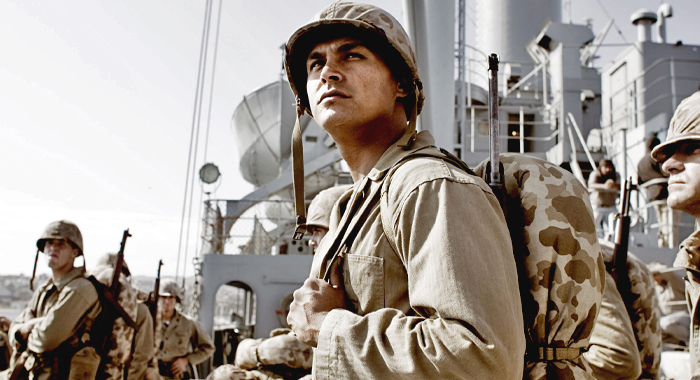
(Photo by ©DreamWorks)
Adam Beach is perhaps one of the most well-known Native (First Nations) actors in Hollywood, having appeared in such roles as Victor Joseph in Smoke Signals, Ira Hayes in Clint Eastwood’s Flags of Our Fathers, Dr. Charles Eastman in Bury My Heart at Wounded Knee, and Detective Chester Lake alongside Ice-T in Law & Order: Special Victims Unit. In 2016, Beach briefly made an appearance as one of DC’s first Native American superheroes Slipknot in Suicide Squad, but his first foray into the world of comic books was cut short when his character was quickly terminated. In the course of Beach’s career, he has performed in over 60 feature films and nearly 50 television titles and series episodes.
“As the tortured, heavy-drinking Hayes, Beach is an emotional open wound, and his performance gives the movie its soul.”
– Carla Meyer, Sacramento Bee, Oct. 20, 2006 on Flags of Our Fathers
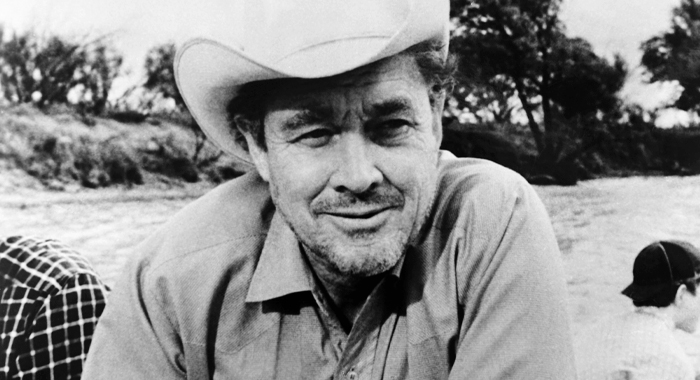
(Photo by Everett Collection)
Born in Osage country, and a self-proclaimed Cherokee who also had Irish heritage, Francis Benjamin Johnson Jr. was an Indian who spent his entire acting career playing pretty much anything but an Indian. Hired as a stuntman by director John Ford in the 1948 film Fort Apache, Johnson’s career continued for decades, working with the likes of John Wayne, Rock Hudson, Marlon Brando and Steve McQueen. In 1971, Johnson was awarded the Academy Award for Best Supporting Actor for his role in The Last Picture Show. Johnson worked up until his death at 77 years of age, garnering over 100 films and television shows in his career. In 2003, Johnson was inducted into the Texas Hall of Fame, and the Ben Johnson Cowboy Museum was opened in his hometown of Pawhuska in 2019. He has a star on the Hollywood Walk of Fame at 7083 Hollywood Boulevard.
“The most memorable performance in this finely crafted film is given by [Ben Johnson], a weather survivor of the cinematic Old West… What he does in The Last Picture Show deserves recognition when the next Oscar nominees are selected.”
– Clyde Gilmour, Toronto Star, Jan. 29, 1972 on The Last Picture Show

(Photo by Everett Collection)
Hailing from the Tsleil-Waututh Nation, located in British Columbia, Chief Dan George is a First Nations actor who received tremendous acclaim as Old Lodge Skins in the 1970 film Little Big Man, starring Dustin Hoffman. At 71 years of age, George received an Academy Award nomination as well as a Golden Globe nomination for his performance as supporting actor in the film. His career continued into his older years, taking roles in such productions as the television shows Bonanza, Kung Fu, and The Incredible Hulk. In 1976, George portrayed the character Lone Watie in Clint Eastwood’s The Outlaw Josey Wales. George died at the age of 82 in North Vancouver. In 2008, the Canadian postal system issued a postage stamp featuring Chief Dan George as part of the “Canadians in Hollywood” stamp series.
“George gives a performance of such natural dignity and warmth that he and his character will live on in the mind and the heart for a long time to come.”
– George Anderson, Pittsburgh Post-Gazette, March 11, 1971 on Little Big Man
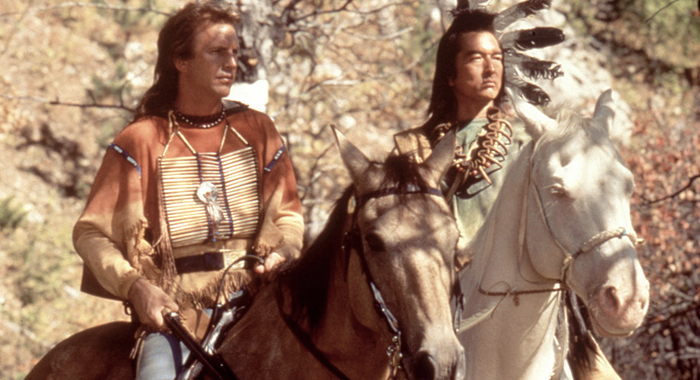
(Photo by ©Orion Pictures)
Graham Greene is a Oneida actor who hails from the Six Nations Reserve in Ontario, Canada. He began his acting career in theater at the Native Earth Performing Arts Center in Toronto and, in 1984, got a role in the CBC series Spirit Bay. In 1990, Greene portrayed the role that would change his career as the character Kicking Bird in Kevin Costner’s Dances with Wolves, for which Greene received an Academy Award nomination. After that high-profile role, Greene acted in such films as Thunderheart, Maverick, and Die Hard with a Vengeance alongside Samuel Jackson and Bruce Willis. His work has continued up until the present, playing a role in such productions as Longmire, Disney’s Echo, and as the character Maximus in Sterlin Harjo’s Reservation Dogs.
“Greene handles the role extremely well. He makes the language come alive and balances Costner’s quirky John Dunbar quite nicely.”
– Bruce R. Miller, Sioux City Journal, Nov. 30, 1990 on Dances with Wolves
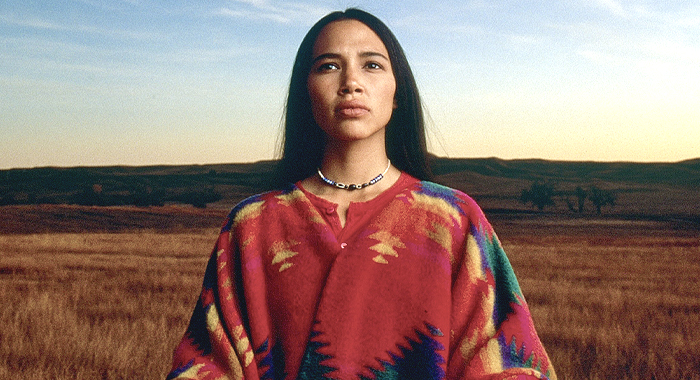
(Photo by Andrew Eccles/©TBS courtesy Everett Collection)
Born in Anchorage and a citizen of the Alaska Native Village Koyuk, Irene Bedard began her career as Mary Crow Dog in the television program Lakota Woman: Siege at Wounded Knee — a role for which she received a Golden Globe nomination for Best Actress in a Miniseries or Television Film. In 1995, the same year Bedard portrayed the voice of Disney’s since-deemed problematic film Pocahontas, she was selected as one of People Magazine’s “50 Most Beautiful People.” In 1998, Bedard played the role of Suzy Song in the Native American cult classic film Smoke Signals, which Navajo director Chris Eyre directed. In the years that followed, Bedard continued to work in television and film in such projects as Into the West, Longmire, The Stand, Alaska Daily, and most currently as Yagoda in the yet-to-be-released live-action adaptation of Avatar: The Last Airbender.
“A young social worker who has befriended Arnold and who discovered his body, helps to bring the sojourners together, with Irene Bedard bringing a piquancy and. intelligence to [her role].”
– Malcolm Johnson, Hartford Courant, July 24, 1998 on Smoke Signals
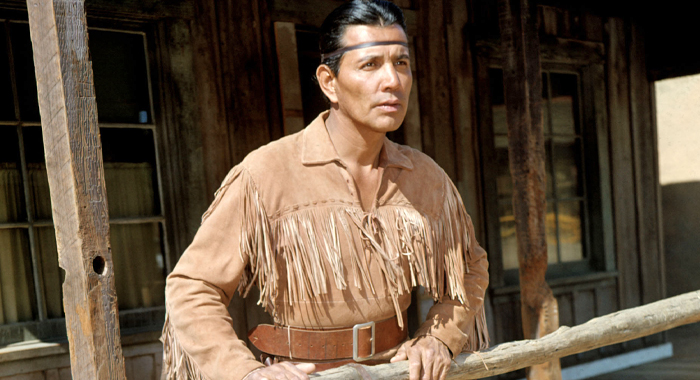
(Photo by Everett Collection)
Born under the name Harold Jay Smith (which means he is likely my cousin), Jay Silverheels was the grandson of the Mohawk Chief A.G. Smith and Mary Wedge. A notable athlete and Lacrosse player, Silverheels played for the Toronto Tecumsehs, a box lacrosse team. He was also a Golden Gloves tournament boxer, placing second in the middleweight class. While touring as a lacrosse box player in 1937, American actor and comedian Joseph Evans Brown convinced Silverheels to do a screen test, after which he soon began work as a stuntman and extra. For the next several years, he acted in films and westerns alongside Humphrey Bogart, James Stewart, and Bob Hope. In 1949, he would be cast as the wildly popular character of Tonto in the television series The Lone Ranger for 217 episodes. In his career, Silverheels appeared in about 100 films and television series. His star on the Hollywood Walk of Fame is at 6538 Hollywood Blvd.
“The difference in mediums has occasioned no departure in the characterizations of Clayton Moore as the masked stalwart or Jay Silverheels as Tonto, with both living up to past traditions of cunning and daring.”
– The Kansas City Star, Feb. 2, 1956 on The Lone Ranger
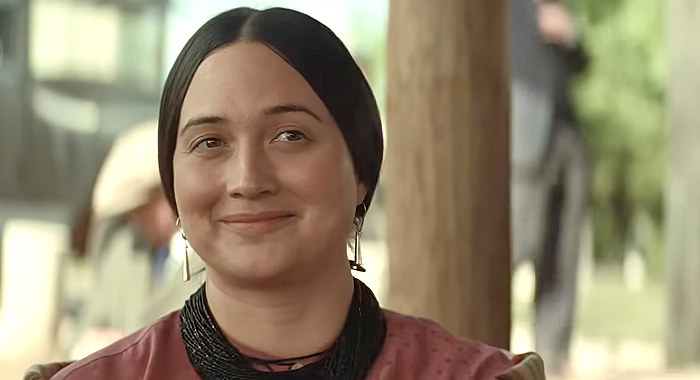
(Photo by ©Paramount Pictures)
As a Native American actress, Lily Gladstone has perhaps received the highest degree of current recognition and exposure due to the release of Martin Scorsese’s Killers of the Flower Moon, a film that details the atrocities and murders during the Osage Reign of Terror. Gladstone’s feature film career got its start when she appeared in director Arnaud Desplechin’s film Jimmy P: Psychotherapy of a Plains Indian in 2012. Just a few years later, Gladstone appeared in Kelly Reichardt’s Certain Women, for which she earned widespread acclaim, including a Los Angeles Film Critics Association Award for Best Supporting Actress among several other accolades. Gladstone has also earned praise from critics in her roles in The Unknown Country and Fancy Dance. There has been a consensus among several critics that Gladstone’s role as Millie Burkhart in Killers of the Flower Moon could earn her the distinction as the first Native American actress to receive an Oscar.
“Gladstone, in the rare Scorsese film that gives center stage to a female character, is the emotional core here, and it’s her face that stays etched in our memory.”
– Jocelyn Noveck, Associated Press, Oct. 18, 2023 on Killers of the Flower Moon
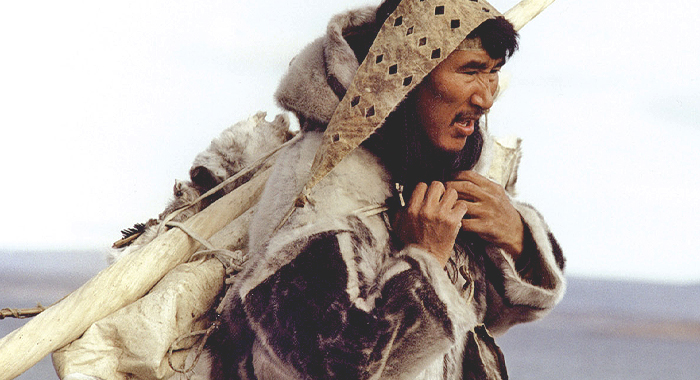
(Photo by ©Lot 47 Films courtesy Everett Collection)
Natar Ungalaaq is an Inuit actor and filmmaker known for his world-renowned roles in the films Atanarjuat: The Fast Runner in 2001 and The Necessities of Life in 2008. In 2002, Ungalaaq was presented with the award for Best Actor at the American Indian Movie Awards, as well as the Jutra Award for Best Actor in a Leading Role and the Best Actor award at the Palm Springs International Film Festival. Due to the incredible popularity of his films at an international level, Ungalaaq is credited with bringing Alaska Native stories and culture to a world film audience.
“Natar Ungalaaq, a prominent Inuit sculptor and actor, anchors the drama in the robust role of Atanarjuat, and he manages to make the man both grandly heroic and frustratingly human.”
– Dennis King, Tulsa World, July 19, 2002 on Atanarjuat: The Fast Runner
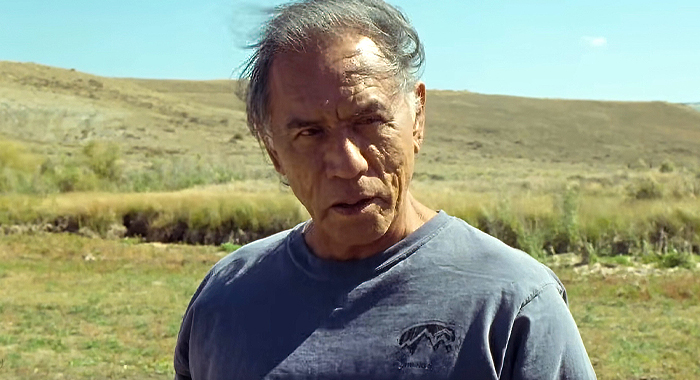
(Photo by ©Bleecker Street Media)
Born in Nofire Hollow, Oklahoma, Wesley Studi is a Cherokee actor who attended the Chilocco Indian Agricultural School, later enlisted in the Oklahoma National Guard, and went to Vietnam as an infantry soldier. He later participated in the conflict at the Second Wounded Knee in 1973. In college after Vietnam, Studi got a theatrical role in a production of The Royal Hunt of the Sun with the American Indian Theater Company. Eventually, Studi appeared in the film The Trial of Standing Bear. He frequently got roles portraying Native Americans in a historical context, including Dances with Wolves, The Last of the Mohicans, Geronimo, and Hostiles, but he also demonstrated his versatility in films like Mystery Men, Avatar, and A Love Song. Considering his career spanned several decades in television and film, Studi was honored at the 11th annual Governors Awards with an Academy Award for a lifetime of work.
“The charismatic actor brings a stalwart grace to [his role]… Studi’s Lito is full of internal conflicts, a man who misses his wife dearly and hasn’t yet learned how to be intimate with others again but still feels the pull of this other woman he once loved.”
– Marya E. Gates, The Playlist, Jan. 21, 2022 on A Love Song
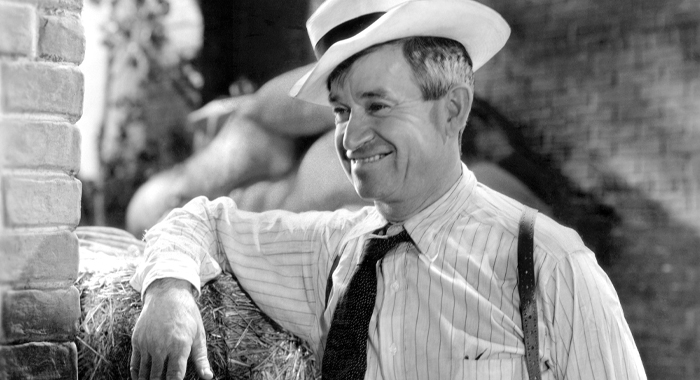
(Photo by ©20th Century-Fox Film Corp.)
Born in 1879 in the Cherokee Nation on the Dog Iron Ranch, near Oologah, Oklahoma, William Penn Adair Rogers was one of the most popular and highest-paid American actors in the early 20th century. His film career spanned over 50 features during the silent era, as well as an additional 21 films that were considered “talkies.” In addition to his film career, he got his start as a cowboy trick roper and eventually performed in the popular Colonel Mulhall’s Wild West Show. He even saved the audience at Madison Square Garden when a wild steer escaped and he roped it in front of the crowd, an act that garnered national attention. He also signed with the famous Ziegfield Follies on Broadway, even entertaining President Woodrow Wilson. In a sad tragedy and at the height of his career, Rogers, at 55, was killed with aviator Wiley Post in a plane crash. Rogers has a star on the Hollywood Walk of Fame at 6401 Hollywood Blvd. On Nov 14, 2019, Google honored his 140th birthday with a Will Rogers Google Doodle.
“Will Rogers gives the performance of his life and the owner of “Blue Boy” — proud, anxious, and tender by turns… It is a perfect bit of genre work — a reminder that in a business full of grand character actors [Rogers] is an old master. ”
– George Campbell Dixon, Daily Telegraph (UK), April 10, 1933 on State Fair
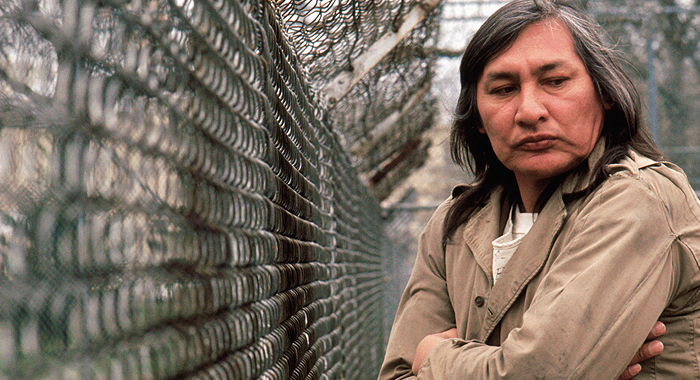
(Photo by Everett Collection)
Without a doubt, Will Sampson’s portrayal as Chief Bromden in One Flew Over the Cuckoo’s Nest alongside Jack Nicholson is one of the most widely acclaimed Native American acting roles in the history of film. In addition to his acting career, which included 25 films, Sampson was an avid rodeo competitor with a specialty in bronco riding. When Sampson was competing on the rodeo circuit, film producers Michael Douglas and Saul Zaentz saw the rugged and tall Sampson, who stood at 6 foot 7 inches tall, to be a perfect actor for the imposing figure Chief Bromden. Other film roles for Sampson included Tall Eagle in Firewalker and the medicine man Taylor in Poltergeist II: The Other Side.
“Will Sampson, who plays chief Bromden, is a wildlife artist, and is also acting for the first time. Sampson, who is not only physically right for the part (he stands 6-feet, 7-inches tall), has an expressive and sympathetic face. He is a joy to watch, and his final triumph is unforgettable.”
– Patrick Taggart, Austin American-Statesman, Feb. 4, 1976 on One Flew Over the Cuckoo’s Nest
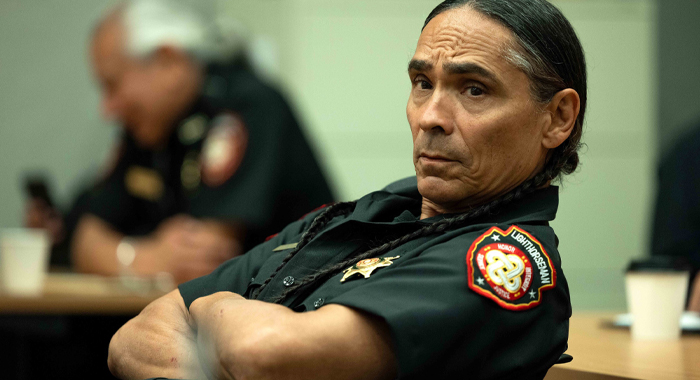
(Photo by Shane Brown/©FX)
Growing up in Browning, Montana, Zahn McClarnon would often visit the Blackfeet Indian Reservation where his maternal grandparents lived. A former student at Omaha Central High School, McClarnon often cites his high school drama teacher Peggy Stommes as a voice of inspiration. In the 1990s, McClarnon worked in theater and even Historic Jamestown in Virginia before moving to Los Angeles. In 2005, he landed a role in Into the West on TNT and later worked with Jason Momoa, who is Native Hawaiian, on Sundance TV’s The Red Road. From 2012 to 2017, McClarnon portrayed Tribal Officer Mathias in Longmire and later Hanzee Dent in the second series of Fargo, as well as Akecheta in HBO’s series Westworld. McClarnon continues to portray significant roles in the industry, including Joe Leaphorn in Dark Winds, Officer Big in Reservation Dogs, and William Lopez in Disney’s Echo.
“In particular, I loved Zahn McClarnon’s turn as Officer Big, who seems only half-heartedly interested in doing his job. McClarnon is an actor with a wealth of experience, but he tends to play rather somber characters… He’s too rarely allowed to go comedic, and Reservation Dogs lets him be incredibly silly early and often.”
– Emily St. James, Vox, Sept. 21, 2021 on Reservation Dogs
Vincent Schilling, a certified Rotten Tomatoes critic, is Akwesasne Mohawk and the founder and editor of Native Viewpoint as well as the CEO and President of Schilling Media, Inc., a Native American and veteran-owned media corporation. He is a award-winning journalist and book author as well as a public speaker and social media influencer dedicated to bringing awareness to Indigenous people. You can follow him on X/Twitter at @VinceSchilling, on YouTube or on any of his other socials here.
Archival curation and research for this feature was led by Tim Ryan. Additional review curation by Rob Fowler and Dom.